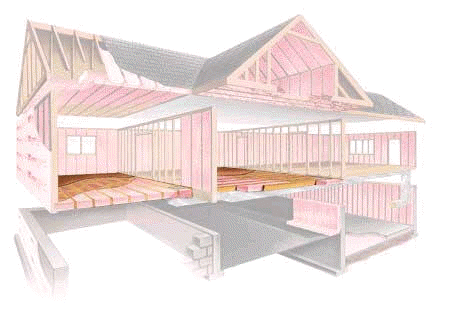Adding insulation to a floor, as shown in Figure 1, is one of the wisest home improvements that you can undertake. Insulation not only provides a return on the investment but makes your home much more comfortable for your family and reduces drafts and illness.
Cold floors are a major complaint among homeowners. Often the problem is an un-insulated floor above an unheated crawlspace or basement. If you have a vented crawlspace with insulated ducts and no pipes, the best course of action is to insulate the floor above it.
In heating climates, homes with sub-floors of plywood or OSB sheathing generally will not need a separate vapor retarder. But older homes with sub-floors made of wood planking may need a separate vapor retarder. (In Gulf Coast and Florida, local building practice may not call for any interior vapor retarder.) If needed, simply cut strips of polyethylene the width of joists and staple directly to underside of sub-floor, or use kraft-faced insulation with the paper up and in contact with the sub-floor.

Figure 1 - Insulating floors
Begin at one end of floor and place insulation between floor joists.
Insulation will stay in place temporarily if you are using R-19. R-25 insulation needs to be supported as you go. Use metal insulation supports (16 or 24 inch wire rods or crisscrossed wire) to hold insulation in place.
Be careful not to compress insulation too much with supports. Insulation should fit snugly against band joist and overlap bottom plate.
Measure and cut small pieces of unfaced insulation to fit snugly against band joist. If the insulation is faced, peel off facing before installing the small pieces.
Where a wall vapor retarder is required, use a material that meets local building codes (fire rated).
Safety - When installing insulation it is important to wear adequate safety products, including, glasses, goggles, dust mask, respirator, work gloves and coveralls.
Insulation should be placed around cross braces by cutting it and pushing it between the braces.
Note: Never leave faced insulation exposed. The facings on kraft- and foil-faced insulation will burn and must be installed in substantial contact with an approved ceiling, wall, or floor construction material to help prevent the spread of fire in the wall, ceiling or floor cavities. Unfaced fiber glass is non-combustible. A 4- or 6-mil polyethylene should be placed over the dirt to help prevent moisture from coming up into the crawlspace.
